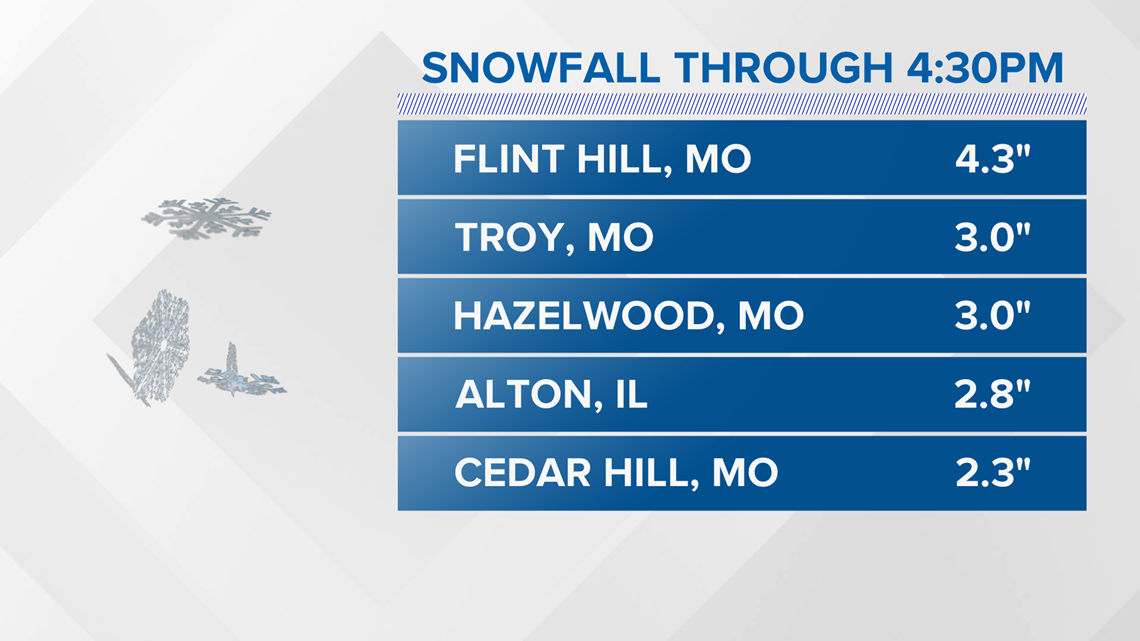ST. LOUIS — A major winter storm moving across the region is expected to drop roughly 6 inches of snow on parts of Missouri, and the storm is already causing travel problems.
The National Weather Service has issued a winter storm warning for much of Missouri and part of Illinois. The snow is expected to return to the metro area around 9 a.m.
While the initial wave of winter weather has moved on to the northeast leaving freezing drizzle to linger through the overnight hours. Roads remain slick, especially side roads, bridges and overpasses. Temperatures are expected to remain below freezing overnight in the mid to upper 20s.
RELATED: Live interactive radar
Even the slightest bit of ice on the roads can make for treacherous driving conditions.
It's always best to avoid the roads in these conditions, but here are five tips to keep you safe on the road if you need to go out for that bread and milk during difficult winter weather.
RELATED: 18 movies for a snow day
Cold Weather Driving Tips:
- Keep a bundle of cold-weather gear in your car, such as extra food and water, warm clothing, a flashlight, a glass scraper, blankets, medications, and more.
- Make certain your tires are properly inflated and have plenty of tread.
- Keep at least half a tank of fuel in your vehicle at all times.
- Never warm up a vehicle in an enclosed area, such as a garage.
- Do not use cruise control when driving on any slippery surface, such as on ice and snow.
Tips for Driving in the Snow:
- Stay home. Only go out if necessary. Even if you can drive well in bad weather, it's better to avoid taking unnecessary risks by venturing out.
- Drive slowly. Always adjust your speed down to account for lower traction when driving on snow or ice.
- Accelerate and decelerate slowly. Apply the gas slowly to regain traction and avoid skids. Don't try to get moving in a hurry and take time to slow down for a stoplight. Remember: It takes longer to slow down on icy roads.
- Increase your following distance to five to six seconds. This increased margin of safety will provide the longer distance needed if you have to stop.
- Know your brakes. Whether you have antilock brakes or not, keep the heel of your foot on the floor and use the ball of your foot to apply firm, steady pressure on the brake pedal.
- Don't stop if you can avoid it. There's a big difference in the amount of inertia it takes to start moving from a full stop versus how much it takes to get moving while still rolling. If you can slow down enough to keep rolling until a traffic light changes, do it.
- Don't power up hills. Applying extra gas on snow-covered roads will just make your wheels spin. Try to get a little inertia going before you reach the hill and let that inertia carry you to the top. As you reach the crest of the hill, reduce your speed and proceed downhill slowly.
- Don't stop going up a hill. There's nothing worse than trying to get moving up a hill on an icy road. Get some inertia going on a flat roadway before you take on the hill.


